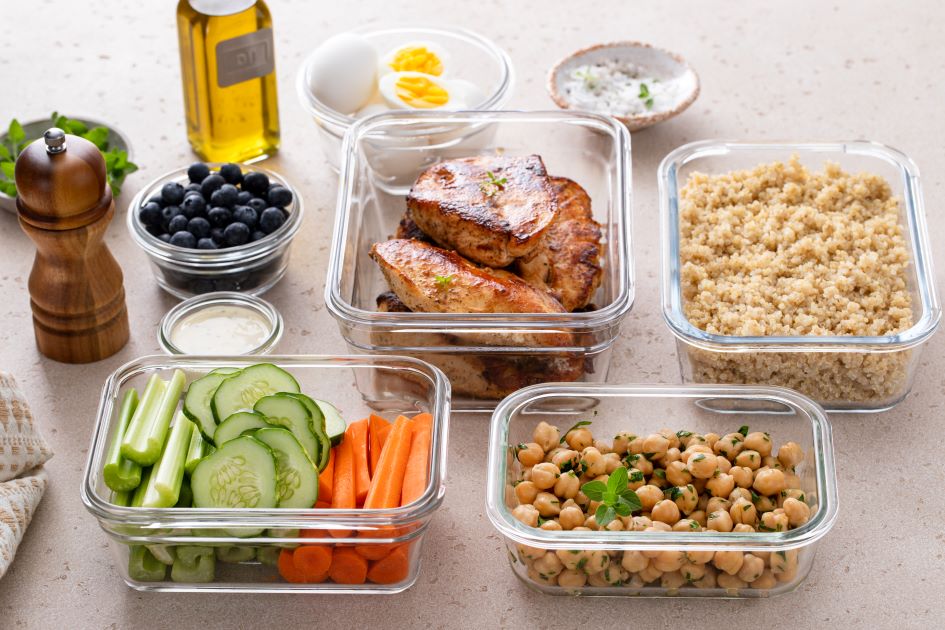Losing fat and gaining muscle at the same time – known as body recomposition – is often considered the “holy grail” of fitness goals. The good news is that with the right approach, anyone can work toward this goal. In fact, body recomposition methods can benefit everyone from complete beginners to elite athletes healthline.com. Whether you’re new to exercise, a seasoned athlete, an older adult aiming to stay strong, a woman seeking a toned look, or a busy professional with limited time, the principles remain the same: balance your diet, train smart, and build sustainable healthy habits.
Understanding Body Recomposition
Body recomposition means simultaneously losing body fat and gaining lean muscle mass, thereby changing your body’s fat-to-muscle ratio (as opposed to just losing weight on the scale). Traditionally, people assumed you must “bulk” (gain weight/muscle) or “cut” (lose fat) separately. However, science shows it’s possible to do both at once under the right conditions. Essentially, your body can burn stored fat for energy while building new muscle tissue – but to achieve this, two key conditions must be met: a strong resistance training stimulus and a high-protein diet. By eating slightly fewer calories than you burn (a modest calorie deficit) and engaging in regular strength training, you encourage your body to tap into fat stores for fuel without sacrificing muscle – even potentially adding muscle in the process, healthline.com. This approach works because muscle is metabolically active: the more muscle you have, the more calories you burn at rest, womenshealthmag.com, aiding fat loss and improving overall fitness.
Keep in mind that recomposition is generally a gradual process – slower than an all-out “weight loss” diet or a dedicated muscle bulk. It requires patience and consistency. Factors like your starting point will influence your progress. For example, if you’re a beginner to weight training, you’re in luck – newbies often experience rapid gains in strength and muscle (sometimes called “newbie gains”), which means you can build muscle even on a calorie-deficient deficit. Those with higher body fat stores also have an advantage: having extra energy reserves makes it easier to fuel muscle growth while losing fat. On the other hand, if you’re already an experienced athlete and relatively lean, simultaneous fat loss and muscle gain is more challenging (though not impossible). Progress will be slower and will require very disciplined programming of both diet and training. The bottom line is that body recomposition is achievable for most people, but setting realistic expectations is important. In the following sections, we’ll cover the core strategies – nutrition, exercise, and lifestyle habits – that form a balanced blueprint for losing fat and building muscle.
Diet Strategies: Fueling Fat Loss and Muscle Gain
Nutrition is the foundation of any body recomposition plan. Your goal is to lose fat without losing muscle, and that requires a thoughtful eating strategy – not a fad diet or extreme restriction, but a balanced, nutritious approach. Here are some key diet principles for body recomposition:
- Maintain a Slight Calorie Deficit: To shed body fat, you do need to consume fewer calories than you burn. However, avoid crash diets or overly aggressive cuts. Experts recommend a moderate calorie reduction – just enough to stimulate fat loss without starving your muscles, healthline.com. This might mean eating roughly 200–500 calories below your maintenance level per day. Steer clear of very low-calorie diets (for instance, <1200 calories for most people); such extreme deficits can backfire by slowing your metabolism and causing muscle breakdown womenshealthmag.com. A modest deficit, on the other hand, prompts steady fat loss while preserving your hard-earned muscle.
- Prioritize Protein and Whole Foods: Protein is your best friend for body recomposition. A high-protein diet is essential for building and repairing muscle, and it also helps you feel full and can even directly aid fat loss. Make sure to include protein-rich foods in every meal – for example, lean meats (chicken, turkey, lean beef), fish, eggs, low-fat dairy, legumes (beans, lentils), or plant-based proteins. Many studies show that consuming plenty of protein helps reduce fat while preserving lean mass during weight loss healthline.com. Aim for a variety of whole foods overall: vegetables, fruits, complex carbohydrates (like whole grains, oats, sweet potatoes), and healthy fats (avocado, nuts, olive oil). A balanced diet rich in whole, unprocessed foods provides the nutrients your body needs and keeps you satisfied – it’s the best approach for everyone, regardless of fitness goal, healthline.com. In short, ditch the junk and eat real foods that fuel your body.
- Watch Portions (No Need for Fad Diets): You don’t necessarily have to micromanage every calorie to recomp, but you do need to be mindful of portions. Some people find it helpful to track calories or macros to ensure they’re in a slight deficit with enough protein. However, if you find calorie-counting tedious, you can succeed with simple portion control habits. For example, focus on proper serving sizes and ensure that every meal includes a source of protein and a quality carbohydrate. By structuring your plate – say, half filled with veggies, a quarter with lean protein, a quarter with complex carbs, plus a bit of healthy fat – you naturally keep portions in check and get a balance of nutrients. This approach keeps you in tune with hunger cues and prevents the feeling of being on a “diet.” The key is consistency: stick to mostly nutrient-dense whole foods and reasonable portions, and fat loss will follow. Remember, extreme diets are not sustainable. It’s far better to eat a satisfying, balanced diet you can maintain long-term than to go on an ultra-restrictive eating plan that leaves you starving and causes yo-yo weight regain.
- Stay Hydrated: Don’t overlook water as part of your nutrition strategy. Proper hydration is important for metabolism, digestion, and overall performance. In fact, being even mildly dehydrated can impair fat-burning and make it harder to gain muscle. Make it a habit to drink water regularly throughout the day (carry a water bottle, aim for at least 8 cups/2 liters per day, more if you’re active). Adequate hydration also helps control appetite (we sometimes mistake thirst for hunger) and improves workout quality. As one expert put it, hydration is super important in body recomposition and in everyday life – it keeps your body in an optimal state to burn fat and build muscle. So, sip that water consistently!
- Fuel Your Workouts (Timing Matters): While total daily intake matters most for fat loss, what and when you eat can impact your energy and muscle recovery. Try to consume a balanced meal or snack with protein and carbs a couple of hours before workouts, so you have energy to train hard. After training, refuel with protein (to kickstart muscle repair) and some carbs (to replenish energy). For example, you might have Greek yogurt with fruit, a protein shake with a banana, or chicken with rice and veggies as a post-workout meal. Spacing your protein intake evenly across meals is often recommended to maximize muscle protein synthesis healthline.com. And don’t fear carbs around workouts – they are useful fuel and will be used by your muscles. Nutrient timing isn’t as critical as overall diet, but a smart pre- and post-workout eating habit can improve your performance and recovery, which in turn supports better fat loss and muscle gain results.
Exercise: Combining Cardio and Strength Training
No recomposition plan succeeds without the right exercise regimen. To build muscle and lose fat, you’ll need to engage in strength training while also doing some cardio to support fat burning and cardiovascular health. Here’s how to balance both:
- Prioritize Strength Training: Resistance training (lifting weights or bodyweight exercises) is non-negotiable for building muscle. When you challenge your muscles with weight or resistance, you stimulate muscle fibers to grow stronger and larger during recovery. If you neglect strength training, a large portion of any weight you lose from dieting could come from muscle rather than fat – not what we want. In fact, strength training is necessary to alter body composition, whereas cardio alone won’t build muscle. Aim for at least 2–3 strength training sessions per week as a baseline (many experts suggest a minimum of two full-body sessions weekly for beginners, healthline.com). If you’re more advanced, 3–5 sessions a week can be great, allowing you to target different muscle groups on different days. Focus on compound movements that work multiple muscles at once – exercises like squats, lunges, deadlifts, push-ups, bench presses, rows, and overhead presses. These give you the most “bang for your buck” by engaging large muscle groups (burning more calories and stimulating more growth). Start with weights or resistance you can handle with good form and gradually increase the intensity over time (add a little more weight or a few more reps each week). This progressive overload ensures you keep gaining strength and muscle. Don’t be afraid to lift heavy relative to your ability – challenging your muscles is what signals them to grow. As trainer Erin Oprea says, “don’t be scared of weight training” – it’s a major key to losing fat and gaining muscle because “weights help you to put on more muscle mass and burn more calories [and fat]” more efficiently, womenshealthmag.com. This is true for women and men alike – lifting won’t make women bulky (women have different hormone profiles and typically build muscle tone without excessive size), and it brings a host of benefits from stronger bones to better curves. So embrace those weights!
- Incorporate Cardio Wisely: Cardiovascular exercise is your tool for burning extra calories, improving heart health, and accelerating fat loss. But it should complement, not replace, your strength training. Effective recomposition plans include a mix of aerobic exercise and resistance training, because each serves a purpose. “It’s a good idea to have a combination of aerobic and resistance-type exercises — aerobic can help you burn calories and is good for cardiovascular health, while resistance training helps to build muscle,” advises Dr. Mir Ali, a weight-loss specialist. In practice, you might include 2-4 cardio sessions per week alongside your lifting. The type of cardio can be whatever you enjoy and can do consistently – brisk walking, jogging, cycling, swimming, dancing, or using machines like the elliptical or rowing machine are all great options. Even everyday activities like fast-paced walking with your dog or hiking count toward your aerobic work. For general health, adults should get ~150 minutes of moderate-intensity cardio a week (or 75 minutes of vigorous activity), which you can break into 30-minute sessions 5 days a week, for example. If you’re short on time, consider high-intensity interval training (HIIT) once or twice a week – this involves short bursts of very intense effort followed by brief rests (for example, sprint for 30 seconds, walk for 30 seconds, repeat). HIIT can burn a lot of calories in less time and may even confer some muscle-sparing or building stimulus (because of the intensity) compared to long, slow cardio. However, don’t overdo high-intensity work; it’s taxing on the body. A mix of some steady-state cardio and occasional intervals can work well. Importantly, schedule your cardio in a way that supports your strength workouts, not hinders them – for instance, do cardio on alternate days, or if on the same day, consider doing it after weight training or in a separate session, so you don’t exhaust yourself before you lift.
- Find the Right Balance: The exact balance of strength vs. cardio will depend on your personal goals and preferences. If building muscle is a slightly higher priority, lean more heavily into strength training (e.g., 3-4 days lifting, 2 days light cardio). If improving endurance or losing a lot of fat is a priority, you might do a bit more cardio – but never at the expense of strength work. Keep in mind that too much cardio combined with a big calorie deficit can make it harder to recover and might risk losing muscle. You want to be active enough to burn fat, but also well-rested enough to train hard and build muscle. A balanced program might look like: 3 days of full-body strength training, 2-3 days of moderate cardio (20-40 minutes each), and plenty of daily light activity (walks, taking the stairs, etc.). Also, integrate flexibility/mobility work as needed (like stretching or yoga) to help with recovery and injury prevention. The bottom line for exercise is consistency and progression – challenge yourself, but listen to your body. Over time, you’ll get stronger, faster, and leaner. And remember: the best workout is the one you enjoy enough to stick with regularly. If you despise running but love Zumba or cycling, do that. If the gym isn’t accessible, you can do resistance exercises at home with minimal equipment (or even bodyweight HIIT circuits) and still see great results. There are many paths to recomposition; choose one that fits your lifestyle.
Lifestyle and Behavioral Changes: The Missing Piece
Achieving fat loss and muscle gain isn’t just about diet and workouts – it’s also about your day-to-day habits and mindset. In many ways, consistency and sustainable behavior changes are the make-or-break factor. Here are the crucial lifestyle elements to focus on:
- Consistency Over Perfection: Perhaps the most important principle of all is consistency. Body recomposition is truly a “marathon, not a sprint.” Lasting change comes from making healthy habits part of your lifestyle. There will be days you miss a workout or overindulge a bit – what matters is that you get back on track and keep going. “Body recomposition is not about quick fixes; it’s about sustained habits,” as one fitness expert wisely said. In practice, that means committing to regular workouts each week, sticking to your nutrition plan most of the time, and not letting occasional slip-ups derail you. Don’t chase overnight miracles or obsess over being perfect – instead, aim to be consistent 80–90% of the time and patient with yourself. Those small efforts, repeated day in and day out, will snowball into significant results.
- Prioritize Sleep and Recovery: If you want to lose fat and gain muscle efficiently, sleep is non-negotiable. Adequate sleep (generally ~7–9 hours/night for adults) profoundly affects your hormone balance, recovery, and even hunger levels. Skimping on sleep makes everything harder – you won’t burn fat as effectively, building muscle is more difficult, and you’ll likely feel hungrier and less satisfied (due to impacts on hunger hormones). As nutritionist Dina Khader notes, people who don’t get enough sleep often crave more calories and have a tougher time with fat loss. So make sleep a priority: establish a regular sleep schedule, create a relaxing bedtime routine, and ensure you’re sleeping in a dark, comfortable environment. Similarly, give your body time to recover from workouts. Muscle is built outside the gym – during rest, your body repairs muscle fibers and makes them stronger. Schedule at least 1–2 rest days per week (more if you feel very fatigued or are a beginner). You can do light activity on rest days (walking, stretching), but avoid intense training every single day. Also, pay attention to stress management – high stress can elevate cortisol (a stress hormone), which in excess might hinder muscle gain and encourage fat storage. Incorporate stress-reducing practices that work for you: it could be meditation, deep breathing, journaling, light yoga, or even enjoyable hobbies. A body under less stress will respond much better to your diet and exercise efforts than one chronically frazzled and sleep-deprived.
- Stay Hydrated and Nourished: We mentioned hydration in the nutrition section, but it’s worth reiterating as a daily habit. Carry water with you and sip regularly. Often, fatigue or cravings are exacerbated by dehydration. Similarly, stick to a meal routine that keeps you fueled. It might be three balanced meals and one or two healthy snacks per day – find what schedule makes you feel energized and satisfied. Avoid skipping meals excessively or doing extreme fasting, as that can lead to overeating later or poor workout performance. Some people find success with meal prepping – preparing healthy meals in advance (like on Sunday for the week) – so that a busy schedule doesn’t lead to grabbing fast food. If you’re a busy professional, having ready-to-go nutritious meals and snacks (Greek yogurt, nuts, fruit, pre-cut veggies, etc.) can keep you on track even when work gets hectic. Proper planning and hydration are small habits that yield big dividends in consistency.
- Track Progress Beyond the Scale: When recomposition is your goal, the scale might not budge as quickly as you expect – and that’s okay. Since you are gaining muscle while losing fat, your weight could stay relatively stable or change slowly. This is normal! Instead of obsessing over scale weight, pay attention to other progress indicators: how you look and feel, how your clothes fit, and your improvements in strength and fitness. For example, use a measuring tape to track changes in your waist, hips, or other body circumferences. Often, you’ll see your waist size go down even if your weight doesn’t – a sign you’re losing fat and getting leaner. If your clothes are getting looser around the waist but tighter around your arms or legs (in a good way), that’s a classic sign of successful recomposition. Also, notice your strength gains – perhaps you could barely lift 5-pound weights when you started, and now you can handle 15-pound weights, or you went from being able to do 5 push-ups to 15. Getting stronger is direct evidence of muscle growth. These non-scale victories are incredibly motivating. Consider keeping a workout journal to log your exercises, or taking progress photos every month or two – it’s rewarding to visually see the changes in muscle tone and body shape over time. By tracking these metrics, you’ll stay encouraged that the program is working, even on days when the scale seems stuck.
- Build a Supportive Environment: Lifestyle change is easier when your environment and social circle support your goals. Whenever possible, surround yourself with people who encourage your healthy habits – maybe find a workout buddy, join a fitness class or online challenge, or share your goals with family so they understand your commitments. If your friends are also into healthy living, great – plan active hangouts or potluck healthy dinners together. If not, that’s okay, but try to set boundaries with those who might unintentionally sabotage your efforts (for example, co-workers pushing sweets or late-night drinks daily – politely decline sometimes, or suggest healthier activities). Online fitness communities or tracking apps can also provide accountability and motivation. Celebrate your progress and don’t compare yourself too much to others – everyone’s journey is unique. Finally, educate yourself continuously (since you’re reading this, you’re already doing that!). The more you understand the “why” behind these habits, the more motivated you’ll be to stick with them. Embrace the process as a positive lifestyle change, not a punishment. You’re doing this to feel stronger, healthier, and more confident – keep that why in mind on tough days.
Tailoring the Plan: Tips for Specific Audiences
As mentioned, anyone can pursue fat loss and muscle gain, but individual circumstances might call for slight adjustments in approach. Here are some additional tips for different groups:
- Beginners: If you’re new to structured exercise or healthy eating, start simple. The first few months of strength training are when you’ll likely see rapid improvements – take advantage of these “newbie gains”. Focus on mastering exercise form and building a routine, rather than pushing yourself to extremes. Full-body workouts 2–3 times a week are excellent for beginners. Don’t be intimidated – start with lighter weights or bodyweight exercises and gradually increase challenge. On the diet side, learn the basics of good nutrition (whole foods, protein, veggies) and practice consistency. You don’t need a “perfect” plan from day one; just building the habit of working out regularly and eating a bit better will yield noticeable results for most beginners. Enjoy the journey of discovering what your body can do, and remember that progress (not perfection) is the goal.
- Athletes and Advanced Trainees: If you’re already fit and have been training for a while, you likely have a solid foundation. For you, body recomposition might require more fine-tuning – since you’re closer to your potential, simultaneous fat loss & muscle gain will be slower. Be prepared to dial in your nutrition precisely (tracking macros or cycling calories might be useful strategies at this level) and to periodize your training intelligently. Make sure you’re following a well-designed program that introduces new stimuli (to spur further muscle gains) – this could mean incorporating advanced techniques or varying your rep ranges, as your body may be adapted to your old routine. Pay extra attention to recovery (you’re probably lifting heavier and training harder, so avoid burnout). While challenging, even experienced lifters can see recomposition progress by optimizing any previously neglected areas – for example, ensuring protein intake is high enough, sleep is sufficient, and stress is managed. Patience is key; the changes may be subtle over weeks but add up over months. Also, consider monitoring body fat and muscle through tools like body fat calipers, DEXA scans, or smart scales if you want concrete data, but remember the mirror and strength gains are great indicators too. Lastly, keep your performance in mind – as an athlete, you don’t want to compromise training quality by undereating. A very small calorie deficit (or even eating at maintenance while upping training intensity) might be more appropriate to slowly recomp without harming performance.
- Older Adults: For older individuals (40s, 50s, 60s, and beyond), the focus on building or preserving muscle is especially important. It’s natural to lose muscle with age – adults who do not strength train can lose ~4–6 pounds of muscle each decade, just from aging, health.harvard.edu, a condition known as sarcopenia. This muscle loss can reduce strength, mobility, and metabolism. The great news is that you can rebuild and maintain muscle at any age with a proper strength training program. In fact, older adults can see significant improvements in muscle strength and function with training – sometimes even greater relative gains than younger folks, because there’s more room to grow. Emphasize resistance exercises that are safe and effective for you – weight machines, resistance bands, bodyweight moves, or light free weights under guidance. Always prioritize good form to avoid injury, and allow enough recovery between sessions. Pair your workouts with a protein-rich diet, since muscle building requires adequate protein, and older adults often need more protein to stimulate the same muscle growth due to age-related resistance health.harvard.edu. Ensure you’re eating high-quality protein at each meal (and consider a protein supplement like whey if you have trouble hitting your protein needs through food alone). Also, pay attention to joint health and flexibility – incorporate mobility exercises or yoga to stay limber. Cardiovascular exercise is still important for heart health (walking, swimming, cycling are gentle on the joints), but avoid excessively high-impact activities if they cause pain. Beyond aesthetics, recomposition for older adults is about maintaining independence, strength, and vitality. By losing excess fat and gaining or keeping muscle, you’ll improve your balance, bone density, and reduce the risk of falls or metabolic diseases. Always check with your doctor before starting a new intense regimen, but don’t underestimate your body’s ability to adapt – many people in their 60s, 70s, and beyond have successfully gotten stronger and leaner through consistent training and smart nutrition. It’s never too late to start.
- Women: Women absolutely can lose fat and gain muscle effectively – the approach is largely the same as for men, though there are a few considerations. First, don’t fear lifting weights. It’s a myth that women who lift heavy will automatically become bulky – in reality, women have much lower testosterone and higher estrogen than men, so they tend to develop a lean, toned look rather than huge muscles. Weight training will accentuate your curves in the right ways (think sculpted arms, a strong back, toned legs) and is crucial for increasing metabolism and bone density (important for preventing osteoporosis later in life). Also, building muscle helps women handle everyday activities with ease and improves sports performance. Combined with fat loss, it can significantly change body shape – many women find they drop dress sizes or fit their clothes better even if their weight doesn’t change drastically, because muscle is denser and takes up less space than fat. Nutritionally, women should also focus on protein, whole foods, and a moderate calorie deficit. One difference: women’s calorie needs are often slightly lower than men’s (due to generally having smaller body size and more fat mass), so portion control might be even more important to avoid accidentally overeating. Another consideration is the menstrual cycle – energy levels and hunger can fluctuate throughout the month. Some women plan their toughest workouts when they feel strongest (often in the first half of the cycle) and allow a bit more rest or calories during PMS if energy is low – listening to your body is key. Overall, the empowerment that comes from getting stronger is huge for confidence. And studies show women benefit just as much from high-protein diets and strength training for recomposition. So ladies, lift, eat your protein, and celebrate the muscle you build – it’s your secret weapon for a leaner physique. As a bonus, more muscle will help maintain your results, since it increases your resting calorie burn womenshealthmag.com. If you’re ever unsure, working with a trainer (even briefly) can help you learn proper form and set up a program. But truly, there’s no special “women’s workout” needed – the fundamentals (lift, move, eat well, recover) work across the board.
- Busy Professionals: If you’re juggling work, family, and countless obligations, know that you can still achieve body recomposition – it just requires smart planning and efficiency. Time management is your friend. First, schedule your workouts like appointments – carve out, say, 30–45 minutes a day, 3-5 days a week, and make it non-negotiable personal time. If you can’t afford that many days, even 2 days of full-body training and 1–2 short cardio sessions per week can produce results when combined with a good diet. Consider high-intensity workouts to maximize your limited time: for example, weight circuits or supersets (where you move between exercises with minimal rest) can give you strength and cardio benefits together. High-Intensity Interval Training (HIIT) cardio, such as sprint intervals or fast bodyweight circuits (like burpees, jump squats, etc.), can be done in 20 minutes and provide a great metabolism boost. If getting to the gym is tough, build a simple home setup – a pair of adjustable dumbbells or resistance bands, and your own bodyweight can cover a lot of exercises without commute time. Next, make nutrition easier by simplifying your meals: find a few go-to healthy recipes or prepared meals that you enjoy and can cook in bulk. Use tools like slow-cookers or meal delivery services if needed. Pack your lunch for work and keep healthy snacks at your desk so you’re not stuck with vending machine options. A little prep on weekends (chopping veggies, grilling chicken, etc.) can save tons of time on weekdays. Also, optimize your environment – stock your kitchen with good choices and limit tempting junk food at home. Keep protein shakes or bars handy for when you’re racing between meetings. Busy lifestyles often mean eating out, so learn to navigate restaurant menus: choose grilled or baked proteins, vegetables, salads, and watch out for sugary drinks or alcohol (liquid calories add up). Finally, prioritize sleep and stress relief where you can – even a short 10-minute meditation or a walk during lunch can help clear your head and reduce stress, which will keep you from burnout. Remember, consistency is more important than perfection; even if you can only dedicate a few hours a week, if you do it week after week, you will see progress. Use your discipline at work as inspiration – you are capable of organizing and executing a plan, and your health deserves that same dedication. Think of your workouts as an investment in your productivity and longevity (a fit body and clear mind will help you tackle those busy days even better).
Conclusion: The Path to a Leaner, Stronger You
Embarking on a body recomposition journey is incredibly rewarding – not only will you look leaner and more toned, but you’ll feel stronger, healthier, and more energetic. By combining sensible diet strategies (modest calorie deficit, high protein, whole foods, portion control) with a well-rounded exercise routine (regular strength training plus cardio) and reinforcing it all with consistent lifestyle habits (good sleep, hydration, stress management, and patience), you truly create a holistic blueprint for transforming your body. This process does take time and dedication, but the results are worth it. You’ll be gaining muscle (which is essentially like earning “fitness interest” that makes maintaining your weight easier) while trimming away excess fat. Along the way, celebrate the small victories – an extra rep on your lifts, a healthier blood pressure, a jeans size down, or simply feeling more confident in your skin.
Most importantly, embrace this as a lifestyle change rather than a short-term project. The habits you build will not only help you reach your recomposition goal but also set you up for long-term health and fitness. There will be challenges, and progress may sometimes feel slow, but keep reminding yourself why you started. Stay motivated by thinking about how far you’ve come, and use science-backed knowledge to guide you rather than fitness myths. If you plateau, tweak one variable at a time (perhaps increase your workout intensity, or tighten up your diet slightly) and be patient. Your body is changing for the better, even if the mirror doesn’t show it overnight.
For a detailed step-by-step plan and more advanced tips on achieving body recomposition, you can refer to the ArmyGymnastics article “How to Lose Fat and Build Muscle: The Body Recomp Blueprint”. It breaks down additional strategies and insights for those serious about transforming their physique.
Remember: Fitness is a journey, not a destination. By following this balanced, motivational, and science-driven approach, you are literally rebuilding your body and health one day at a time. Stay consistent, stay positive, and trust the process. Before you know it, you’ll reap the visible rewards of your hard work – a leaner frame, stronger muscles, and a revitalized sense of confidence. Now go out there and crush your goals with this blueprint in hand – the best version of you is in the making!












